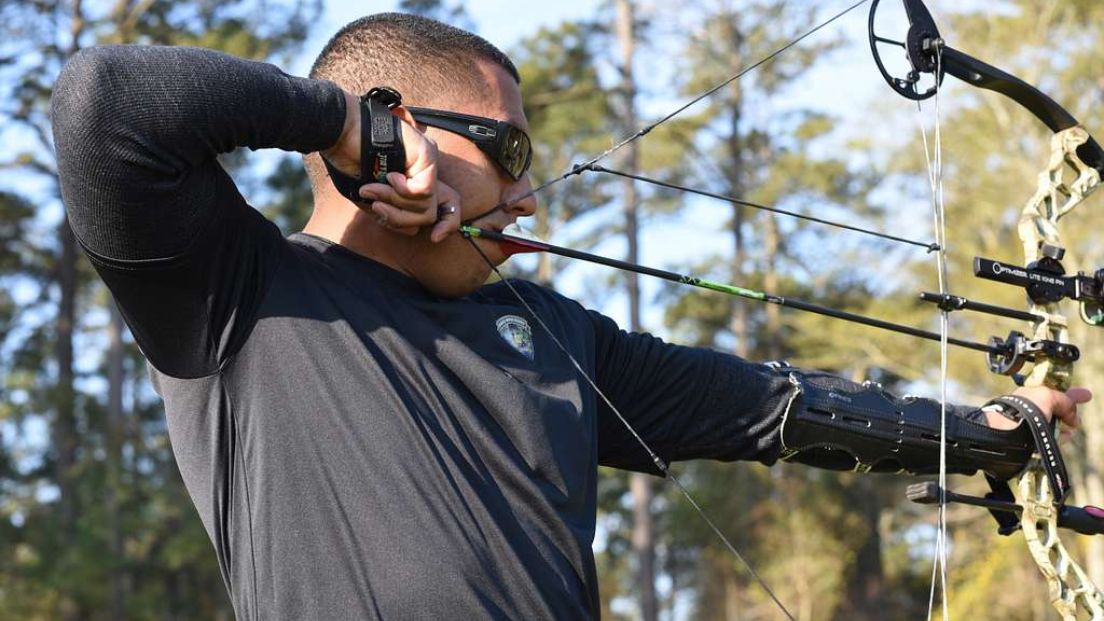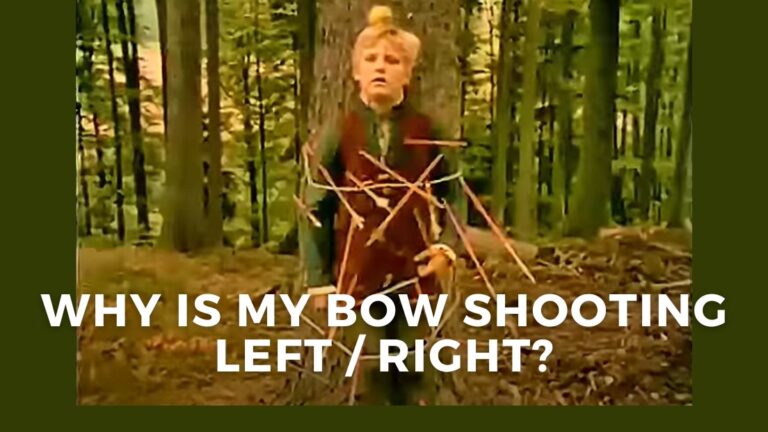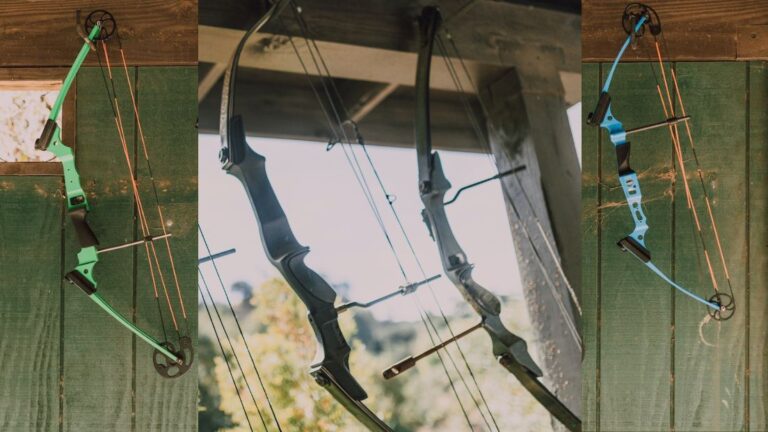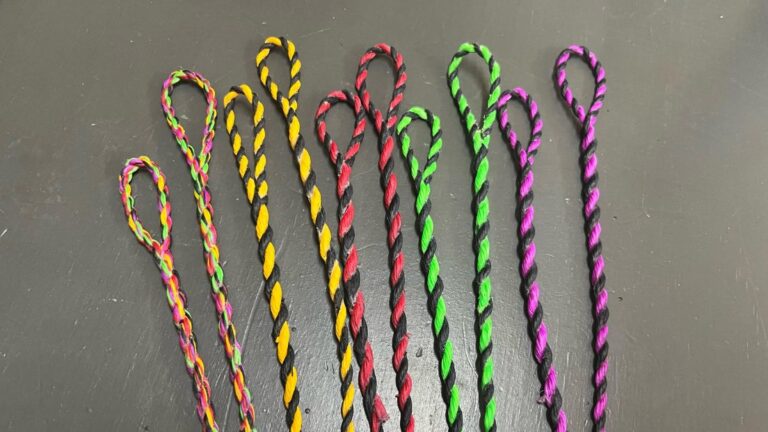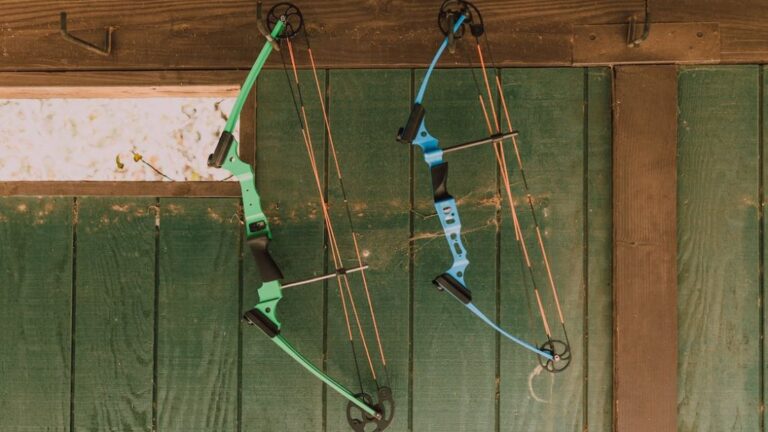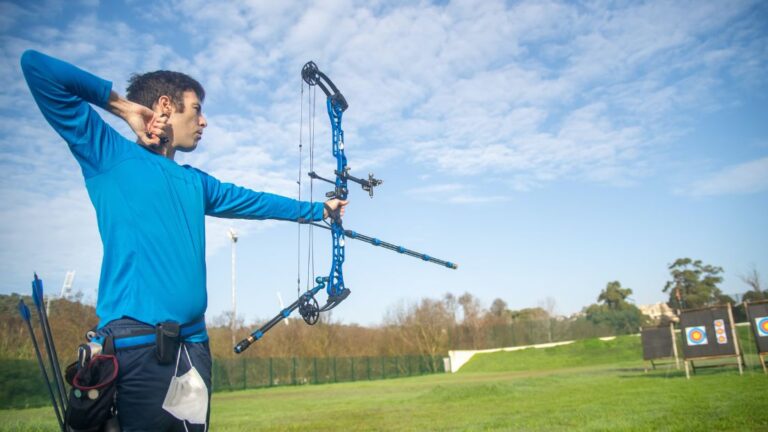About the Author: Austin Murphy is a skilled hunter with a passion for archery. With 17+ years of experience, he possesses extensive knowledge of various archery equipment, including the compound bow, recurve bow, and crossbow. His expertise in these accessories allows him to pursue his love for archery while honing his hunting skills with precision and finesse. As participant in NFAA and ASA competitions, Austin own around 8 Recurve Bows, 6 Compound Bows, and 2 Crossbows.
Compound bows are undoubtedly way more fun than guns.
However, whether you are a professional or amateur archer, you know that they get out of perfection after some time. That’s because they need a regular tune-up.
And that’s why, with these bows, you also get specified guidelines to keep them in the best shape and performance. Yet, there are some general rules and tools too. So, let’s take a look at how much fortune will cost to tune a compound bow.
How Much Does it Cost to Tune a Compound Bow?
Generally, it will cost you around $50 to $150 to tune up a compound bow. But the cost depends on certain factors like if you hire a professional or go to a pro shop it will cost you more than if you do it yourself. Let’s have a look at the tuning services’ cost
| Service | Cost |
|---|---|
| Labor Cost | $20-$50 |
| Basic String Cost | $20-$40 |
| High-Quality Sting Cost | $90-$100 |
| Standard Bow Tuning | $40-$70 |
| Nock Adjustments | $2.50 |
| Arrow Repair Cost (per arrow) | $1 |
| Arrow Building Cost | $25-$35 |
Read More: How to Tune a Compound Bow
How Much Does It Cost To Restrung A Compound Bow Professionally?
The minimum cost that you’ll have to spend to restrung a bow is $70.
But the actual cost of restringing a compound bow depends on a number of factors like the replacement of strings or its tuning. The average cost of restringing a compound bow is up to $100 to $250 if it is done professionally.
Such restringing includes string replacement, tuning of the bow, and installment of rest. If you want customized bow stringing then it can cost up to $250 at the very least.
How to Tune a Compound Bow By Yourself?
Since it’s quite expensive to tune a compound bow by professionals, we came up with a set of guidelines to help you do it on your own.
Read More: How to Adjust the Draw Weight on a Compound Bow
Check the Bow String and Cables:
Of all the items that make up the modern compound and traditional bows are strings and cables which are the heart of your bow’s performance.
In order to tune a compound bow the first thing that you have to do is to inspect your strings and cables. Inspect them in the area where they wrap around the cam, as well as near the D-loop, and fix them if you see any defects.
Set Brace Height:
A bow’s brace height is the distance from the grip’s deepest part to the bowstring. You need to experiment with the range in which you can shoot and find the spot where your bow shoots best.
After setting up the ideal brace height, check it periodically to ensure it hasn’t changed. Brace heights can change stretching or repetitive movements of bow strings stretch.
Adjust Draw Length:
First, tighten the limb bolts in a clockwise direction to tighten them against the riser. Also don’t forget to unscrew the limb bolts in a clockwise direction to lower the draw weight.
Level the Bow:
There are many vices out there that you can use to secure your bow in a level, vertical position.
Center the Arrow Rest:
Install the arrow rest at the center of the bow and adjust it for a better experience. The center shot can be regarded as the perfect alignment of the arrow rest to the bowstring’s nocking point.
After leveling the bow, follow the manufacturer’s instructions, to the face of the riser, depending on the type of rest you have or to attach the rest to the bow riser’s Berger hole.
Don’t worry about getting the rest perfectly positioned at this point, just get it correctly mounted, and don’t obsess about getting it perfectly positioned.
Read More: How Long Does a Compound Bow Last?
Adjust Cam Timing:
After tuning your bow you have to mark the cams where it meets the limb for future reference. Take a Silver Sharpie to mark the position of your top and bottom cams. These are the points where each meets the top and bottom limbs. Doing so will adjust your can timing. Every time you retune the bow these marks will be great reference points.
Paper Tuning:
Make a wooden frame and set up a piece of paper in it. Now set your paper tuner up with a target behind it and make sure to leave enough room between the paper and the target for the arrow to pass entirely through.
Paper tuning will help you to determine the accuracy of your shots. Using the paper tuning technique will help you to create an arrow tear reference chart which will help you to diagnose the angles at which you should shoot.
Still, I would recommend getting tuning done by some professional for the first so that you can get the know-how of proper techniques and cautions!
You might be interested in: Explore the durability and longevity of compound bows in our article on Compound Bow Lifespan.
What Do You Need To Restring Your Compound Bow Yourself?
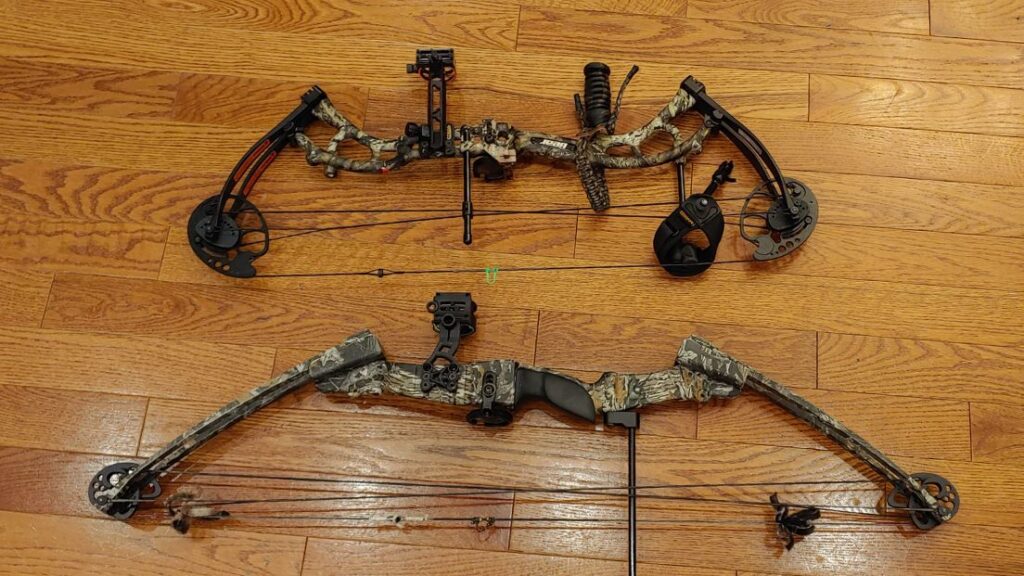
Here are the pieces of equipment that you will need to restring your compound bow.
Read More: Choosing the Perfect Bow: How to Choose a Compound Bow Like a Pro
Replacement Bowstring and Cables:
The bowstrings usually have a lifespan of three years for a regular user but if you use it very frequently your number of shots could be nearly 2000.
In this case, you might wanna replace your bowstrings and cables. Any kind of damage in the bowstrings or cables can injure you or it can cause inaccurate shots.
Bowstring Wax:
Many archers know about the technique of Waxing bowstring which helps it to stay perfect. Using a proper wax compound with silicone in it will help your bow to stay in the perfect shape.
Try to clean your bowstrings before waxing and waxing them on a regular basis. Try to avoid candle wax at all costs.
Bow Press:
Bow’s brace height in simple terms is the distance from the grip’s deepest part to the bowstring. After getting your bow set its brace height in the range in which it is designed the bow is designed to shoot.
Find the spot where your bow shoots best through trial and error method. After finding your ideal brace height, periodically check it to ensure it hasn’t changed. Brace heights can change as bow strings stretch, or you repeatedly remove and restring your recurve.
Allen Wrenches:
Remember to tighten up the limb bolts of the bow with your Allen wrench to ensure the integrity of your limb and riser.
Safety Glasses:
Use safety glasses to protect your eyes from dust, debris, and other hazards. The safety glasses made for archery are usually made of clear or tinted plastic with shatter-resistant lenses.
The glasses used for archery should be clear and free of scratches and they fall off while you shoot.
Read More: Untwisting the Myth: How Many Twists Are in a Compound Bow String?
Bowstring Measuring Tape:
You can simply measure recurve bow string length by using a measuring tape. Simply place the tape from one string groove to another and mark. And you’ll get your measurements.
You might be interested in: Discover why many archers prefer compound bows over traditional ones in our article on Advantages of Compound Bows.
How do I know if my bow is out of tune?
If you hear noise or vibrations while shooting or if your arrows are going in random directions then it is a clear sign that your bow is out of tune.
Tips on Maintaining Your Bow
Maintaining your compound bow will increase its life and you can start with properly cleaning your compound bow. Some compound bows come with the bow maintenance kit which has everything needed to keep your bow in the best condition.
In order to maintain your bow you need to look after the bowstrings, its limbs, its cam and axel, and cables. Let’s discuss all of these one by one.
You might be interested in: Learn how to adjust the draw weight of a compound bow to suit your preferences in our guide on Adjusting Compound Bow Draw Weight.
Regular Cleaning:
Regularly clean your compound bow using a soft cloth, microfiber cloth, toothbrush, brow wax, and archery string lube. Remove dirt or debris and protect it from wear and tear. Clean the areas that are hard to reach like s-crevices.
Bowstring Care:
The key to increasing bowstring longevity is routine waxing. Those who shoot quite frequently should wax the strings anytime they appear overly dry and fuzzy.
Doing so just will keep the fibers well-lubricated and protected from dirt and moisture.
Limb Inspection:
Inspect the limb thoroughly and check for any signs of bubbles, splinters, and cracks.If you notice any of these or some other then get your bow checked at a shop before shooting it.
Cam and Axle Maintenance:
The cams ride on an axle that goes through the end of your bow limb. It’s important to keep the axle lubricated. Doing so will reduce friction and offer smooth operation.
After cleaning the axle from dust or debris just add a drop of lubricant where the axles pass through the limb.
Check Bowstring and Cable Condition:
Always check bowstrings and cable conditions to detect any broken or stretched strands which can affect the bow performance.
Regular Tuning and Adjustment:
Regular tuning and adjusting your compound bow will increase its longevity and performance.
Read More: How Much Does It Cost to Tune a Compound Bow?
FAQs
What is a full bow tune?
A full bow tune means that arrows, arrow rest, cam timing, and cam positions have been adjusted.
What is a Stage 3 bow tune?
Paper Tune which can cover adjusting nock, adjusting yokes, cam timing height, adjusting center shot, arrow rest timing, computer arrow spine check, and form changes is a perfect 3-stage bow tune.
Are expensive bows more accurate?
It doesn’t matter whether a bow is expensive or cheap. Proper care, maintenance, and tuning can ultimately make the shots more accurate.
Do you need to oil a bow?
Yes, you need to oil your bow with silicone or Teflon-based lubricant to increase its longevity.
Is it OK to leave a bow strung?
If your bow is made with synthetic materials then it can remain strung longer as such materials make it susceptible to stress. But it is better for you to unstring your bow if you are not planning to use the bow in the next few days.
How many shots do bow strings last?
A bowstring can last at least 3000 shots if it is properly maintained.
Can a bow survive a dry fire?
A bow usually survives dry fire however if it is damaged then you should avoid dry firing.
You might be interested in: Find out the age requirements for purchasing a compound bow in your region.
End Notes on Tuning a Compound Bow
The cost of compound bow tuning varies for different reasons. When experienced and professional archers do it, they will charge you more. Therefore, tuning it yourself is a good idea, and the above article is meant to help you in tuning your compound bow yourself.

